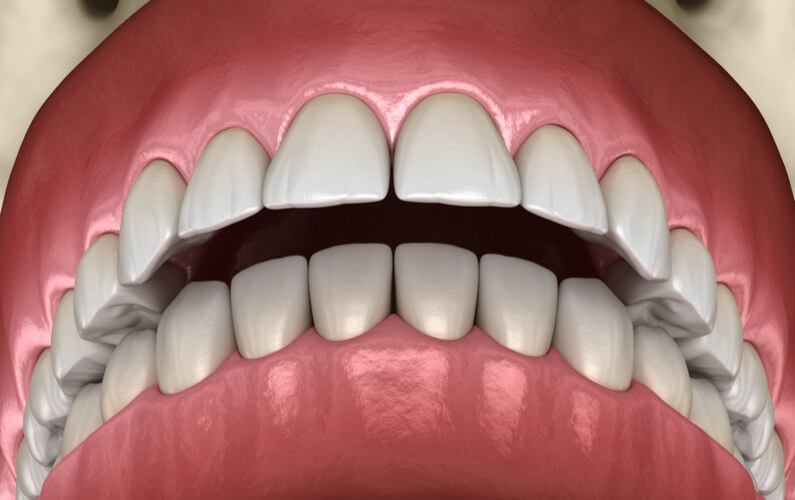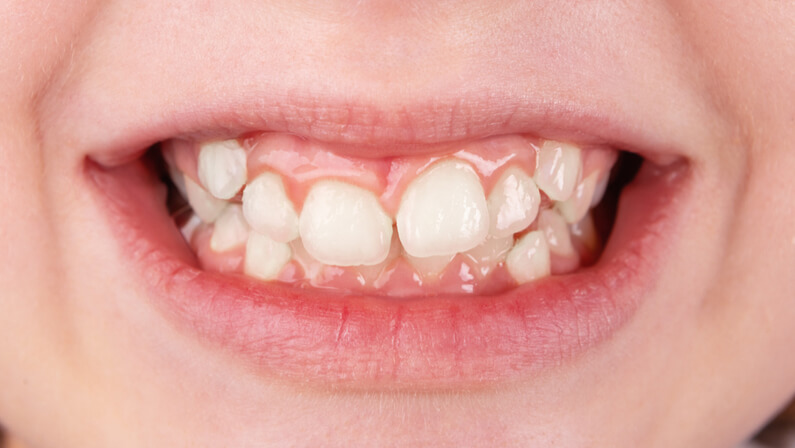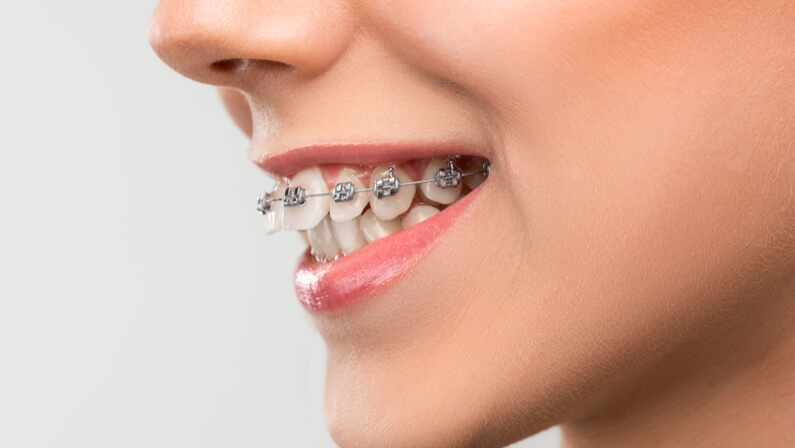Overbite is one of the most prevalent dental disorders treated with orthodontics. It is characterized by an excessive overlap of the upper and lower teeth.
A slight overbite is required for a normal bite. The front teeth must fit over the lower teeth and not leave a space over 2 mm between them.
Overbites come in several forms, each with a unique set of treatment challenges. As a result, each patient’s orthodontist creates a custom treatment plan to ensure that the teeth are straightened most safely and effectively.
Orthodontists are experts at addressing these problems, which is why so many individuals seek treatment from them.
This article will explain to you all there is to know about this dental problem.
What is an overbite in teeth?

This dental issue is a malocclusion where the upper teeth overlap the lower teeth. Also known as “bucktooth,” it happens when the jaws are not properly aligned, and the upper teeth protrude over 2 mm.
Many people ignore the problem of buck teeth until they experience issues, at which point they may decide to seek treatment.
What are the types of overbite?

There are two most common types of overbite as follows.
First is the skeletal overbite which is the result of uneven jawbone growth.
Second is the dental overbite brought about by an external disruption in teeth growth, such as overcrowding, the loss of back teeth, or poor dental practices.
Orthodontists grade the severity of this dental issue on a percentage scale depending on the amount of overlap between the top and bottom teeth: a 30%, 50%, or 100% overbite. The more severe the overbite is, the more complicated the treatment would have to be.
If you have an impinging overbite, your lower teeth will press on the palate behind your top teeth while your mouth is closed, causing gradual damage to the bone that surrounds your upper front teeth. You can lose your front teeth or suffer extensive damage to them due to this.
For the most part, overbites may be corrected with merely adequate orthodontic treatment. But, for more severe cases, oral surgery may be necessary to provide the best possible outcome.
How to know if you have an overbite?

The most obvious symptom of this dental problem is how your upper front teeth extend past your lower front teeth. Other effects of an overbite are as follows:
- Difficulty opening or shutting the mouth to its maximum extent.
- Eating causes discomfort.
- There is a sharp discomfort in the jaw.
- Language hurdles.
What causes an overbite?
Various habits cause this dental issue, but the most common reason is inherited. It is much like other physical characteristics that we pass on from generation to generation. Other reasons for an overbite can begin as early as infancy.
Thumb-sucking

The bite we have can be significantly affected by thumb-sucking. Adult teeth begin to grow at about the age of three or four, and thumb-sucking may become problematic.
The pressure exerted by the thumb on the teeth might result in the emergence of the permanent teeth at an angle. These teeth overlap one other at an irregular angle because of this.
Crowding or spacing

An overbite can be caused by teeth that are too far apart or too close together. Teeth that are missing or have gaps might shift the position of your front teeth, causing them to stick out and cover your bottom ones.
Overbite can occur if you have overcrowded teeth, leading to misalignment.
Overbite Complications

Leaving an overbite untreated might create serious health issues. Tooth decay and temporomandibular joint problems, which can occur due to incorrect jaw posture, are two of the most severe consequences. In addition to overbite problems, they include:
- Tooth decay and gum disease
- Pain in the jaw
- Irritating migraines
- Pain or discomfort during eating
- Mouth opening and shutting difficulties
- Sleep apnea
- Inability to talk
If left untreated, an overbite can affect the face structure and cause concerns like low self-esteem in the patient. During pre-pubescence, if an overbite in early infancy is significant and continues to worsen, the appearance of the face may begin to deteriorate.
How is an overbite diagnosed?
Regular dental checkups, advised at least twice a year, can address any issues with your teeth. Your dentist can diagnose and cure any pain or discomfort you’re experiencing because of your overbite.
Diagnostic dental x-rays may be necessary to see your jaw and teeth in greater detail, although this is rare. If a child’s permanent teeth have not yet emerged, this is a very critical step to take.
What are the different overbite treatment options?
Orthodontics is the most effective treatment for this tooth problem, and the earlier it is started, the better the outcomes will be. So how is an overbite corrected?
First and foremost, your orthodontist will assess your bite and facial alignment to determine the best course of action. As part of the examination, x-rays and dental imprints are obtained of your teeth.
The dentist will use your impressions to design the ideal pair of braces for correcting malocclusion. The severity of the problem determines the shape of the braces. Depending on how many elastic bands are used, the treatment might take one to two years.
Even though there is no official upper age restriction for orthodontic treatment, treating overbites in children is more uncomplicated than treating them in adolescents or adults.

Get started on the road to a more self-assured smile right now!
Treatment for an overbite, such as dental aligners or braces, can improve oral health regardless of the cause. An orthodontist can help you choose the best course of action for your specific situation.
You don’t have to spend a lot of money to get your teeth straightened. Explore your options right away. Brownstone Dental is ready to assist you in any way possible.